Mie Prefecture is a great place for rail enthusiasts to explore some of the different aspects of Japan’s Railways.
Mie Prefecture not being on the shinkansen network and only allows limited use of the JR Rail Pass, the prefecture does not show up as much as it should on foreign tourists and rail enthusiasts itineraies. In this article we will tell you why it should be on rail enthusiasts list of places to visit.
Just to the West of Nagoya and on the easter side of the Kii Peninsula, Mie Prefecture is a mixture of Nagoya surburbs, industrial, sacred and scenic locations. For railway enthusiasts, there are a lot of different aspects of Japan’s railways that can be seen and rode on. From 2’6″ (762mm) gauge railways to a variety of different trains, both diesel and electric, there is much for the rail enthusiast to enjoy.
20 rail lines, 9 railway companies and 3 different gauges…
As well as services operated by the 3 JR Rail Companies (JR Tokai, JR West, JR Freight), Kintetsu is also a major rail operator in the prefecture as well as a mumber of small rail companies. All the rail lines in Mie are listed in this table. Read further on for more information on why Mie Prefecture is interesting for rail enthusiasts.
Data
Railways in Mie Prefecture
JR Lines
There are 2 “main lines” operated by JR Companies in Mie Prefecture together with 2 other more local JR lines:
JR Kansai Main Line: Nagoya~Tennoji (Osaka)
-

JR Tokai KiHa 25 Kisei Main Line Matsusaka 
JR West KiHa120 Kansai Main Line Tsuge 
JR Tokai 315系 4 car Kansai Main Line set 
JR Tokai 313系 Nagoya station (Kansai Main Line service) -
The JR Kansai Line Nagoya~Kameyama section is operated by JR Tokai and serves the suburban and industrial areas southwest of Nagoya, in particular Kuwana, Yokkaichi and Kameyama. Although this section is electrified its big handicap is that between Nagoya and Kuwana it is mostly single track, which as well as limiting frequency also means that services are slower than the mostly parallel Kintetsu Nagoya Line service. JR Tokai 313 and the newer 315 EMUs are used for services, but you can also see KiHa75 and HB85 (Limited Express) diesel units operating through services to the Kisei Main Line to / from Nagoya.
The section between Kameyama and Kamo (Kyoto Prefecture) is non electrified and operated by JR West using KiHa120 (JR West) diesel cars.
JR Kisei Main Line: Kameyama~Wakayama
-

JR Tokai KiHa 25 & HC 85 Limited Express Nanki Owase 
JR Tokai KiHa 25 Kisei Main Line Matsusaka -
The Kisei Main Line in Mie Prefecture is non electrified. The part of the line operated by JR Tokai runs from Kameyama to Shingu (Wakayama Pref) . Rapid (Rapid Mie 快速みえ) and Limited Express services (Nanki, 特急南紀) to / from Nagoya travel via the Kansai Main Line & take a “short cut” via the Ise Tetsudo Line between Kawarada and Tsu, and join the Kisei Main Line at Tsu, rather than travelling via Kameyama, as do some local services operating to / from Yokkaichi. JR Tokai KiHa11& 25 diesel cars can be seen operating local services. Limited Express Nanki services are operated by JR Tokai’s new HB85系 hybrid diesel units and the Rapid Mie services by KiHa75 units. The Rapid Mie services run through to the Sangu Line to Iseshi and Toba.
Meisho Line: Matsusaka~Iseokitsu
-
-

Meisho Line JR Tokai KiHa11 
JR Tokai KiHa11 Meisho Line Ieki JR Tokai’s Meisho Line runs between Matsusaka (Kisei Main Line) and Ise-Okitsu. It is non electrified and single line throughout, with trains passing at Ieki, which makes it a good spot for taking pictures. Services are operated by JR Tokai’s KiHa11 single car diesel units.
This is a very rural line, with services running every 2 hours with a journey time of approx 1hr 20mins each way. TSJR does recommend this line for its scenery
Sangu Line: Taki~Toba
-

JR Tokai KiHa 75 Rapid Mie Iseshi 
JR Tokai KiHa 25_Taki
The Sangu Line runs between Taki (Kisei Main Line) and Toba via Iseshi, however most local trains run to / from Kameyama and the before-mentioned Rapid Mie service from Nagoya. It is a non electrified and mostly single track line.
The JR line to Toba is less used than the Kintetsu Line, which is electrified, and so faster, with a number of Limited Express services.
JR Freight services
-

JR Freight DF200 Red Bear Yokkaichi JR Freight operates services along the Kansai Main Line to / from Yokkaichi and Tomida. At Tomida exchange is done with Sangi Railway for traffic related to the cement works at Nishifujiwara. Yokkaichi is an industrialised area and is also where one of the few lines owned and operated by JR Freight is, taking trains from the main Kansai Main Line into the industrial area.
Another interesting fact is that this is one of the few places on Honshu where you can see freight being hauled by dedicated main line diesel locomotives, JR Freight’s DF200. These locomotives were originally developed for work in Hokkaido, where most lines are not electrified. With the retirement of the DD51 diesel locomotives by JR Freight, a modified version of the DF200 was introduced to operate primarily on the Kansai Main Line.
-
TSJR has published a couple of articles on our main site which readers may be interested in, here are the links:
Japan’s 2’6″ gauge regular railway lines…all in Mie Prefecture
Mie Prefecture is the only place in Japan where there are 762mm gauge railways used for regular passenger services (i.e. not industrial, tourist or amusement park lines). In the early days of rail in Japan many lines were built to the 762mm gauge, but most were later re-gauged to 1067mm.
The two railways in Mie Prefecture using 762mm gauge are:
Sangi Railway -Hokusei Line (Nishi Kuwana~Ageki)
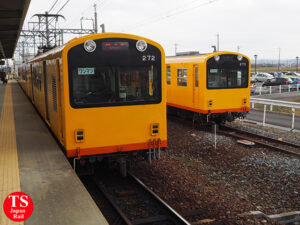
The 20.4km Hokusei Line is the longest 762mm line operating today. it provides a half hourly service from early morning to late evening over most of the line with some extra trains during the peak. It is electrified at 750V DC overhead. It has a fleet of three 4 car trains and four 3 car trains.
The line was acquired and operated by Kintetsu in 1965, but as part of Kintetsu’s nationalisation of its lines, to concentrate on its standard gauge routes, and in 2003 operation of the Hokusei Line was transferred to Sangi Railway.
Yokkaichi Asunarou Railway (Yokkiachi City)
The Yokkaichi Asunarou Railway operates two connect lines in the city of Yokkaichi. The 5.1km Utsube Line that connects Asunarou Yokkaichi Station with Utsube, and the 1.3km Hachioji branch line which connects Hinaga with Nishihino, although trains run to / from Asunarou Yokkaichi.
The lines were originally built as tram lines but converted to heavy rail. Like the Sangi Hokusei Line, the Asanarou lines were operated by Kintetsu, but operation was transferred to Asunarou Railway in 2015. Asanarou Railway is jointly owned by Kintetsu and Yokkaichi City.

(the other 2’6″ railway is the Kobe Gorge Railway in Toyama that operates tourist trains (April~November and industrial trains)
Kintetsu (Kinki Nippon Tetsudo)

TSJR highly recommends exploring Kintetsu, not just in Mie Prefecture but also in the Kansai region. various passes are available to make it easier and more economical. Of course Kintetsu’s operation in Mie Prefecture are also of great interest, read on to find out why…
Kintetsu is the other major railway operator in Mie Prefecture. In fact Kintetsu, whose official name is Kinki Nippon Tetsudo) operates more and faster trains that JR Tokai does. This is partially because it uses standard gauge track and is fully electrified. In fact as parts of the Kintetsu Nagoya Line runs close to the JR Kansai Main Line, it is not uncommon to see Kintetsu trains passing JR trains.
Kintetsu is the largest non JR rail company in Japan, with most of its operations in Kansai, but reaching over as far as Nagoya and Mie Prefecture. It serves the cities of Osaka, Kyoto, Nara in Kansai, as well as places like Nagoya, Ise, Tsu and Toba in Chubu.
Many visitors to Japan, including rail enthusiasts are unaware of Kintetsu’s extensive services, as not being a JR company, these services are not included in the JR Rail Pass, but not only does it serve many places with fast trains, it is an interesting rail company for rail enthusiasts.
Many Limited Express trains, convenience and style
One reason for is the number of Limited Express trains that Kintetsu operates. As a railway operator that does compete with JR on many of its routes it has set speed, frequency and passenger comfort as important differentiating factors. This includes the Hinotori Limited Express train that operates between Nagoya and Osaka Namba. There is also the premium seat sightseeing express “Shimakaze” train that has return services most days from Nagoya / Kyoto / Osaka Namba to Ise, Toba and Kashikojima.
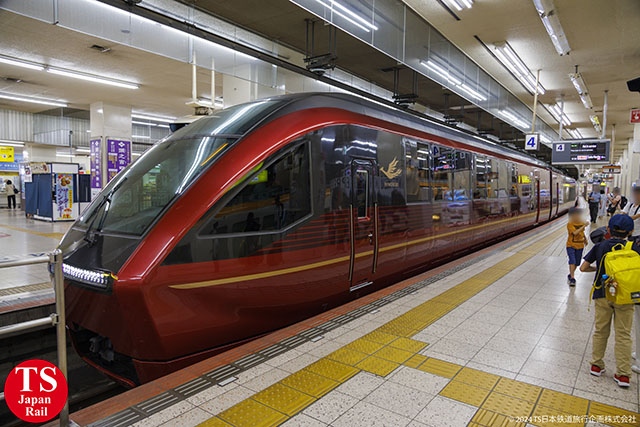

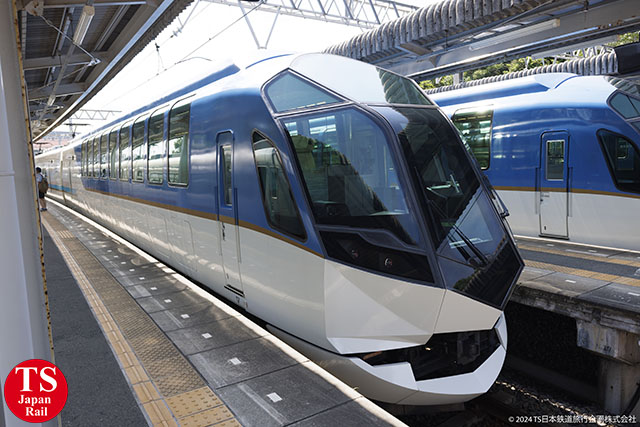

Get more information on Kintetu’s Hinotori and Shimakaze trains
Some of Kintetsu’s trains that you can see in Mie Prefecture
In this gallery we have included pictures of some of the Kintetsu trains you can see in Mie Prefecture
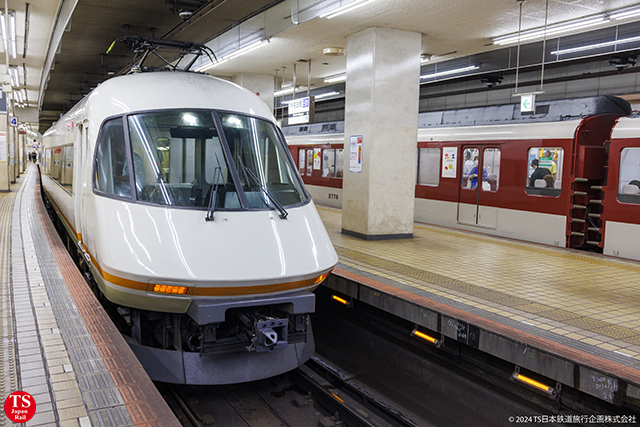



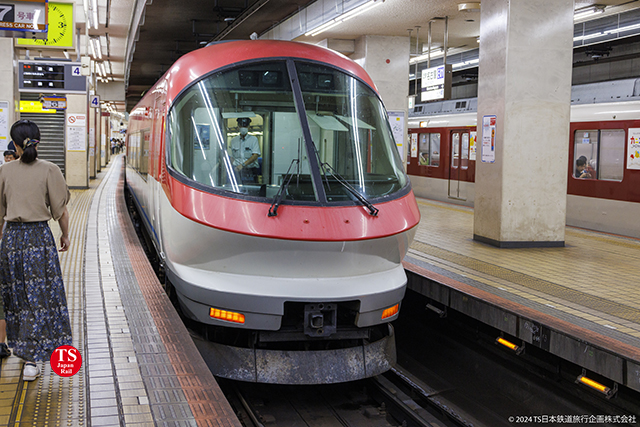



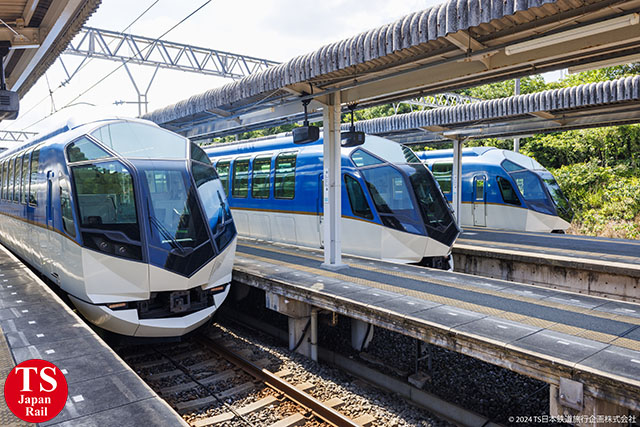

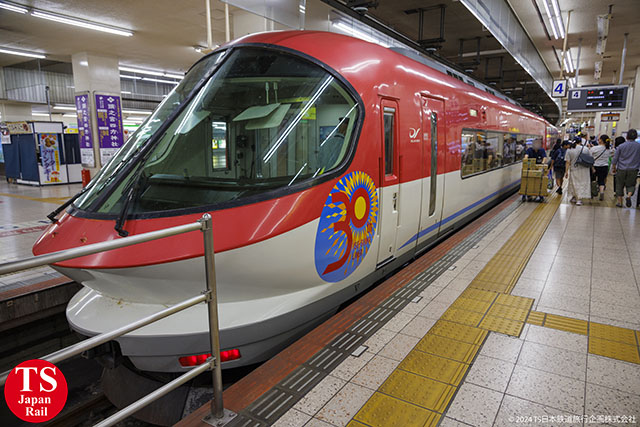

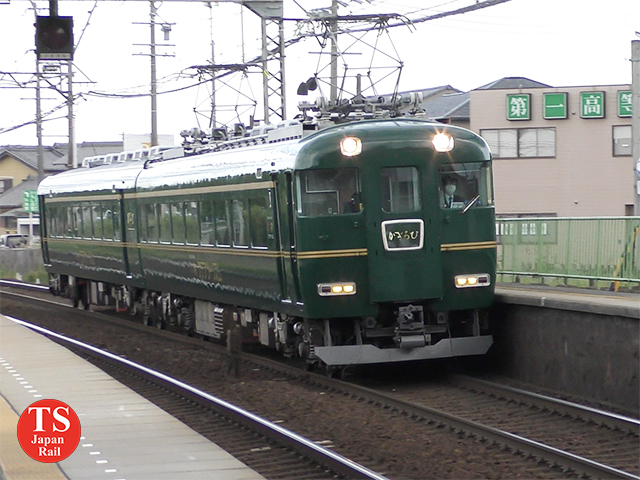

(not regular services)
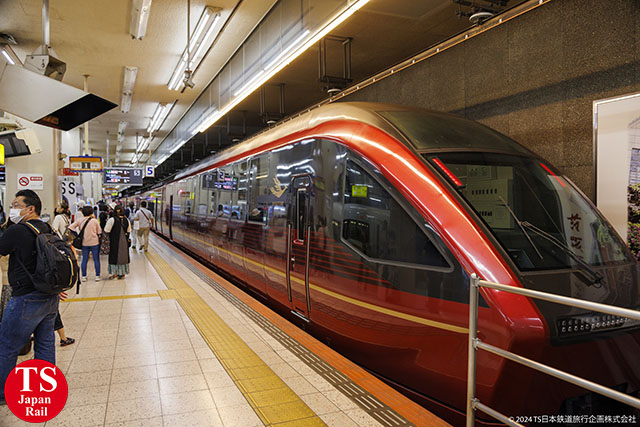

Note: Some pictures taken at Kintetsu Nagoya Station
Other Railways in Mie Prefecture
Iga Railway
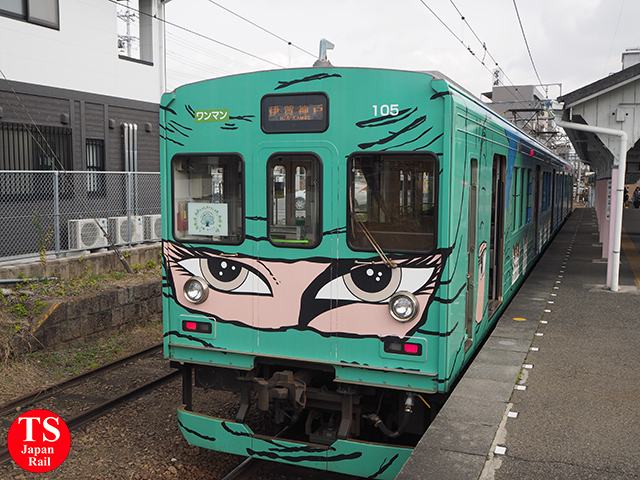

The 16.6km Iga Railway line, nicknamed the “Ninja Line” as it serves the city of Iga which is (one of?) the home of the legendary Ninja warriors.
Beware when travelling on an Iga Railway train, there is probably a Ninja hidden somewhere!
Trains are decorated as per the picture on the right with Ninja characters. All trains are modified ex-Tokyu 1000 series. the line is actually owned by Kintetsu, but operated by Iga Tetsudo.
It operates from Iga Ueno on the JR Kansai Main Line and Iga Kambe on the Kintetsu Osaka line
Sangi Railway
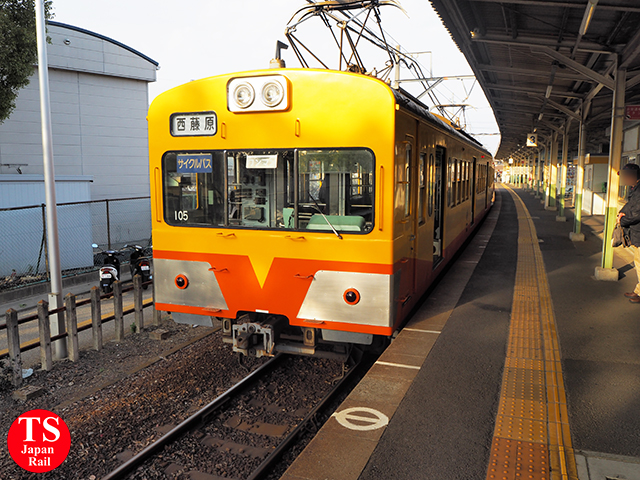

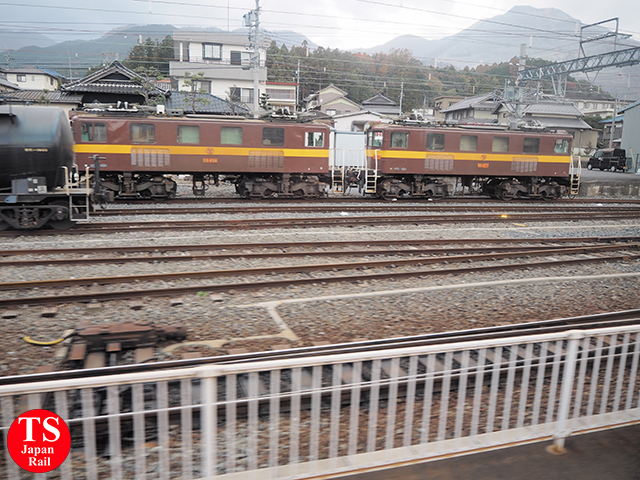

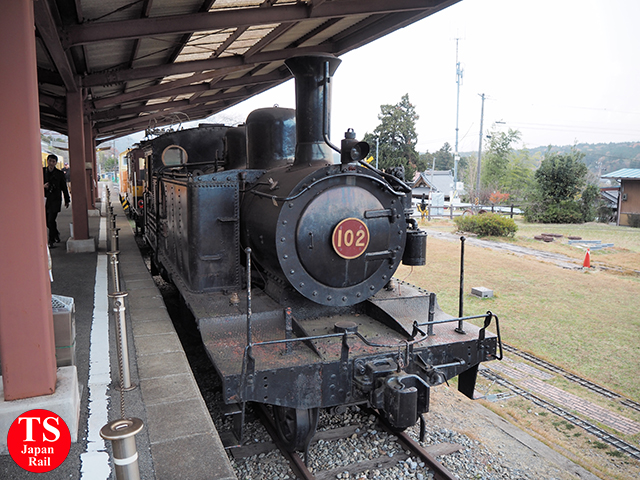

We have already mentioned the Sangi Railway 762mm Hokusei Line, but Sangi Railway also operates another passenger / freight line, the Sangi Line. This line was originally built to serve the Onada Cement Works. Even today the largest shareholder in the railway is the successor company Taiheyo Cement.
The line operates from Kintetsu Tomida to Nishi Fujiwara a distance of 26.5km. There is a 1.1km freight spur line that allows freight trains to leave the main Sangi Line near to Kintetsu Tomida to JR Tomida station where freight is exchanged with JR Freight.
Freight is still carried on the line and Sangi Railway has a fleet of 12 electric locomotives, some of which are ex Tobu Railway ELs.
Currently all passenger rolling stock is ex Seibu Railways, however the railway will soon introduce modified JNR / JR 211s which are being retired by JR Tokai. At Nishifujiwara station old locomotives and some other rolling stock is on display.
Ise Railway
The Ise railway Line was originally built by Japan National Railways (JNR) to shorten the distance on the Kisei Main Line. It runs between Kawarada on the Kansai Main Line and Tsu on the Kisei Main Line, a distance of 22.3km. It has 4 diesel cars.
This line however, due to JNR’s financial situation was built with only a single track (although it was built so it could be upgraded to double track) which meant that its use was limited in terms of number of trains, so upon privatisation of JNR, JR Tokai did not take it over and instead the Ise Tetsudo 3rd sector company was formed.
Ironically, Ise Tetsudo’s main source of income is actually access fees from JR Tokai, who use the short cut route for their Limited Express Nanki, Rapid Mie and local services to / from Yokkaichi and Tsu and beyond.
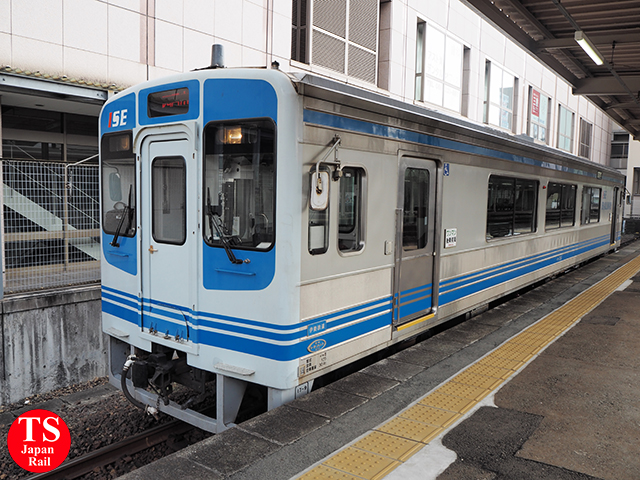

(This arrangement is why JR Rail Pass holders must pay a supplement when using the above mentioned trains)
The line also provides one of the rail links to the Suzuka Formula 1 race track.
Yoro Railway
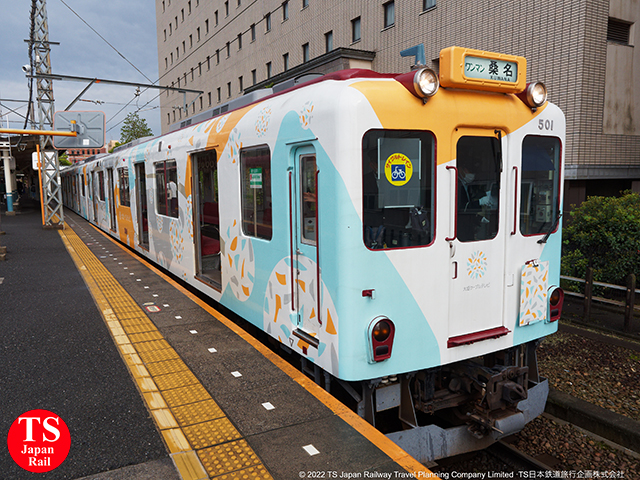

Yoro railway is another Kintetsu owned but operated by another company, although Yoro Tetsudo is wholly owned by Kintetsu.
The Yoro Tetsudo line operates between Kuwana in Mie Prefecture and Ibi in Gifu Prefecture via Ogaki. It travels along the Yoro Mountains, hence its name. Total length is 57.5km. The more interesting parts of this line are in Gifu prefecture so we will leave that for another article.
Travel Information
All of the railways mentioned in this article can be reached fairly easily from Nagoya, which with its railway museum (SC Maglev and Railway Park) and access to Aichi Prefecture and Gifu Prefecture with their railways is a good place to stay.
Nagoya is on the Tokaido Shinkansen, but as you will notice we try and encourage rail enthusiasts to see and experience the many other aspects of Japan’s railways.



Many of the railways that we have featured in this article are non JR, and therefore the all Japan JR Rail Passes are not valid on them. That being said, we also encourage rail enthusiasts visiting Japan to not just to stick to JR lines, there is so much more to see as we hope this article shows!
TS Japan Rail is here to help rail enthusiasts, whether travelling individually, in a group or as an organised tour with travel ideas and itinerary planning (making your travel interesting!) so that you get the most out of your trip to Japan. We also advise clients on the best tickets / passes to buy.























